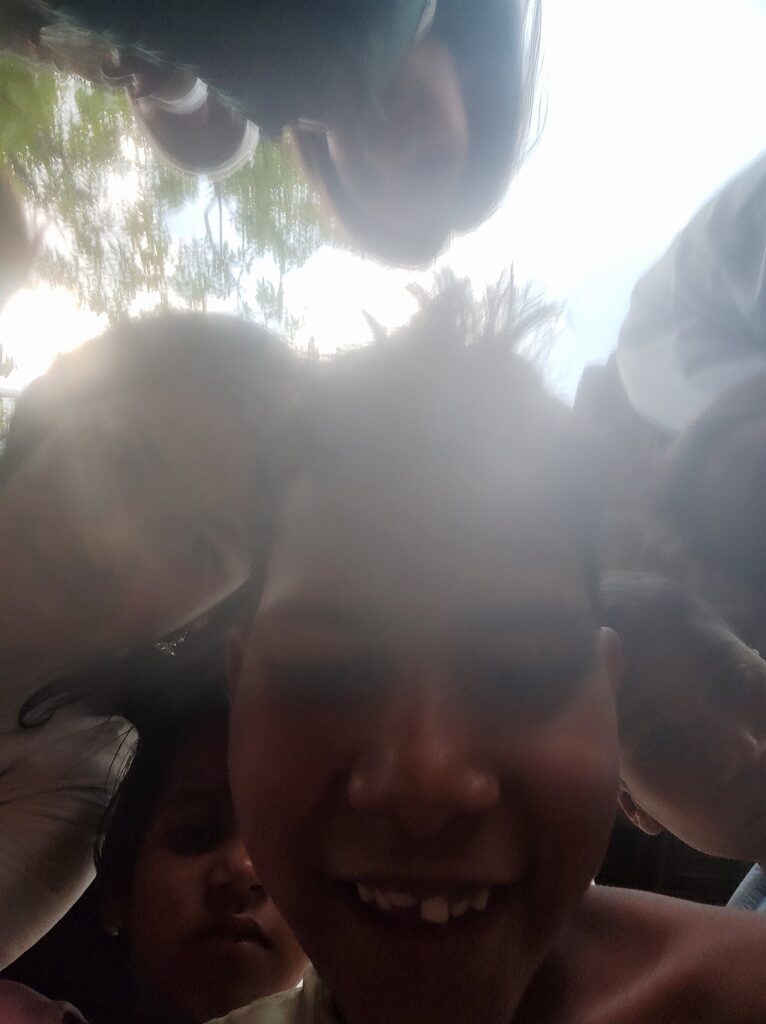Until a few months back, when I saw parents coming in with really sick children but not looking concerned enough, it was unbelievable. Since our clinics are located in remote villages, we sometimes need to refer the patient to a hospital better equipped to handle some severe cases.
The doctor tells the parents, “This child urgently needs to be treated at Udaipur. If you aren’t quick with this, you will lose your child”. Enough to cause panic, right? I think doctors who deal with urban populations refrain from using such straightforward ways to inform families about their child’s condition, so as to not cause immediate panic. But here, despite receiving this grave news, the parents stare blankly at the child.
How can they not be affected? Why do they not sense the urgency? “Tell us, are you ready to go to Udaipur? We can help you with the vehicle and make a referral to the hospital”, the doctor persists.
Silence.
My flustered self which still stands in disbelief at the parents’ reaction (or lack of it) now finds ways to convince them. First calmly, then angrily, then helplessly. Then finally asking our community volunteers to convince them. All the desperate moves. Over the last few months, when faced with such situations, I have grown to be quieter. I try to listen more to what’s going on in the minds of the parents, behind the apparent unmoved exterior. I try to recollect further. Some responses that follow the silence are:
“There’s no one at home now. I’ll take the child later.”
“Can’t something be done here?”
Sometimes the response is more straightforward.
“I’ll be unable to take him, it’s alright if he dies”
“Ghar pe kaam hai, abhi nahi jaa saktei”
“Gai ko chhod kar nahi jaa saktei”
Then it used to be my turn to stare blankly at the parents. To my city self, these responses seem unimaginable, cruel. I’m pretty sure as you read these lines, similar emotions might arise in you as well.
I give it a bit more thought.
What strikes me first is the ‘gai’. Why is the gai more important at this critical life-and-death moment?
Is the thought process, Baccha toh khud kar saktei hai. gai khareedne ke lie abhi utne paise nahi…?
Does economic reality overpower the affection for the child?
Or is the ‘gai’ an excuse to cover up for their lack of money to seek treatment for their dying child? I realize that despite our offer to support “free” treatment, there are large “hidden” costs. Loss of daily wages, food in the hospitals and even that under-the-table money asked by the hospital staff, sometimes.
Is their relationship with gai different from our relationship with gai? IS their bond to the calf akin to that of a parent and a child?
Or is the lack of hope coming from a lack of agency? Is it because they think the disease the child has incurred is incurable, and is because of their own destiny, a curse of the supernatural ?
Or simply, there’s no one to take care of other young children back home.
In some cases, with sensitive handling, counseling, an offer of financial support, escorting the family to the hospital, helping with admission or bringing in other community members to counsel; helps. Lives are saved. For others, it does not. For this child, it did not. Children at home were alone. And the fear of the hospital, based on a past visit, was real. We could not assuage the fear, nor help with care of the children. I do not know what happened to the child. I did not have the courage to find out. But I want to stay with the feeling of helplessness, shame for a while.
In cities, walls of our living rooms often hear remarks and complaining about certain groups and ethnicities. “They breed like animals. This is why our population increases. And we need to bear the brunt, paying for them.” If your first response is denial of participating in such conversations, stop.
PARTICIPATE IN SUCH CONVERSATIONS. PLEASE DO. But bring in more insights while you do that.
Adya Jha
*Written with guidance from Dr Pavitra, Dr Sanjana and Dr Amruth

